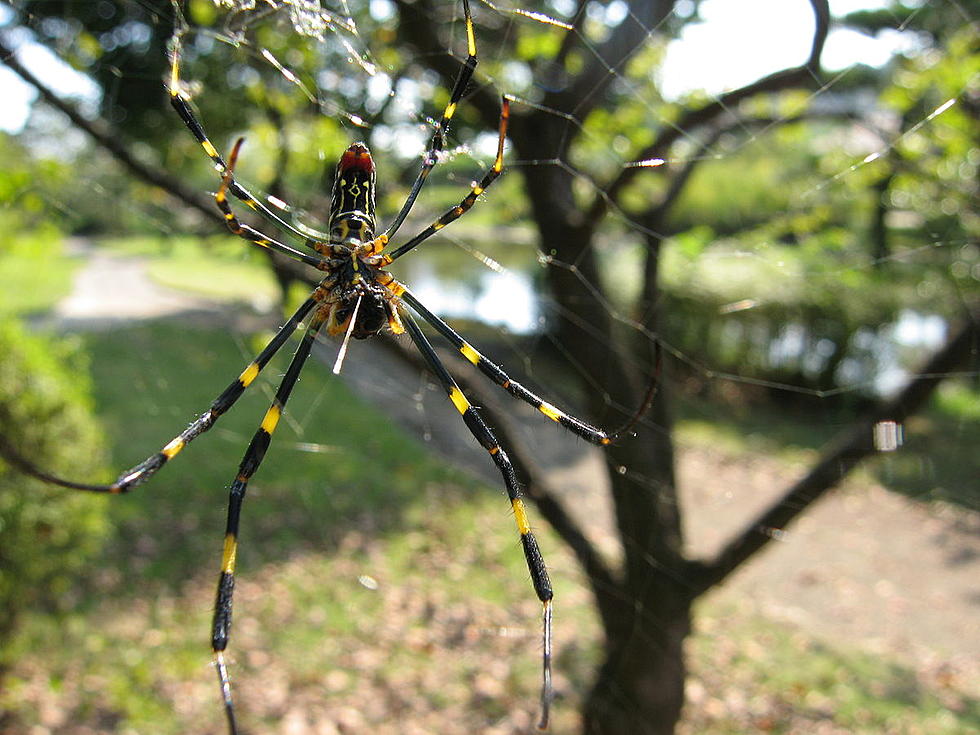
Louisiana’s Five Most Dangerous Spiders
Next thing we know the warmer weather will be here and Louisiana's spiders will be scrambling around a little more than usual. Before your next encounter with an eight-legged nightmare, take a look at the five most dangerous spiders in Louisiana so you know exactly what you're dealing with.
Most Dangerous Spiders in Louisiana
As much as spiders might make your skin crawl, they do serve a helpful purpose.
Spiders help us with pest control by eating other undesirables like roaches, mosquitoes, and flies.
According to a-z-animals.com, there are "roughly 30 to 40 species of spiders dispersed across the state."
The majority of spiders found in Louisiana are harmless and don't bite, but there is a handful that you're definitely going to want to be able to identify and steer clear of.
So, what are the most dangerous spiders in Louisiana?
Here are the ones to avoid and how to identify them.
In Louisiana, there are five species of spiders that are dangerous and potentially deadly.
The good folks over at a-z-animals.com have put together the top five to be on the lookout for.
Top 5 Most Dangerous Spiders in Louisiana
1. Brown Recluse Spider - This is one "Old Violin" you'll want to steer clear of.
There are multiple different species of recluse spiders in the U.S., but the brown recluse is the only one that's native to Louisiana, and it's regarded as the most venomous in North America according to a-z-animals.com.
Brown Recluse spiders are generally yellowish-brown to brown in color, with a darker-colored violin shape on the top of the cephalothorax (not the abdomen).
They've earned the name "recluse" for good reason, so look for brown recluse spiders to be living in dark, secluded, remote environments like sheds, woodpiles, and garages.
2. Northern Black Widow - Out of the three different widow species, two are found in Louisiana.
Both the northern and southern black widows call Lousiana home. Aren't we lucky?
Northern black widow spiders are a glossy jet-black, with a bright-red hourglass marking on the underside of their abdomen. The hourglass of the Northern Black Widow is typically incomplete, with the bottom half and top half separated. The bottom half (farthest from the head) is typically more rounded, rather than triangular.
Northern black widow spiders like enclosed spaces like the inside of walls, but are also found in wood piles and ditches.
According to a-z-animals.com, a northern black widow bite "can produce pain, muscle rigidity, vomiting, and sweating, known as 'latrodectism.'"
If bitten, medical attention is essential and needed fast.
The good news is northern black widows rarely bite and actually try to keep their distance from humans and animals.
3. Southern Black Widow Spider - This is the black widow with the complete, red hourglass.
The southern black widow has a bit of a nasty reputation, as they can be pretty aggressive, and can be quite deadly.
The fact that female southern black widows eat their mate after reproduction doesn't help their reputation either.
4. Black-Footed Yellow Sac Spider - Out of all of the venomous spiders on this life, this one is the least life-threatening one.
It's not going to be pleasant if one bites you, but generally, you shouldn't need medical attention.
The main reason for that is because the black-footed yellow spider is pretty small, only about 1/4 inches long, so its jaws can't get too much venom in you when it chomps down.
The black-footed yellow sac spider is identified by its "dark brown markings on the palps, jaws, and ends of its legs. An orange-brown line also runs down the center of its abdomen" according to a-z-animals.com.
Typically found outdoors in foilage, during colder weather they look for warmer places, like inside your house.
Black-footed yellow sac spiders come out at night to feed and mate.
5. Brown Widow Spider - In addition to the northern and southern black widow, Louisiana is also home to the brown widow.
Although not a native species to Louisiana, the brown widow is here, and they're one of the most dangerous spiders in the state.
The brown widow likes warm, tropical environments, so unfortunately they love it here in Louisiana.
Tan to dark brown, you can identify a brown widow by "its cream-colored abdomen with distinguishing patterns. An orange hourglass marking, similar to the red hourglass of the black widow, can be found on the underside of the abdomen."
Brown widows like populated areas, so the chance of you coming across one are pretty good, unfortunately.
You'll find them hiding under patio furniture, playground equipment, and dark areas.
The brown widow is nothing to toy with. Their venom is twice as strong as black widow spiders.
Read more over at a-z-animals.com.
LOOK: 20 of the biggest insects in the world
Gallery Credit: Andrea Vale
